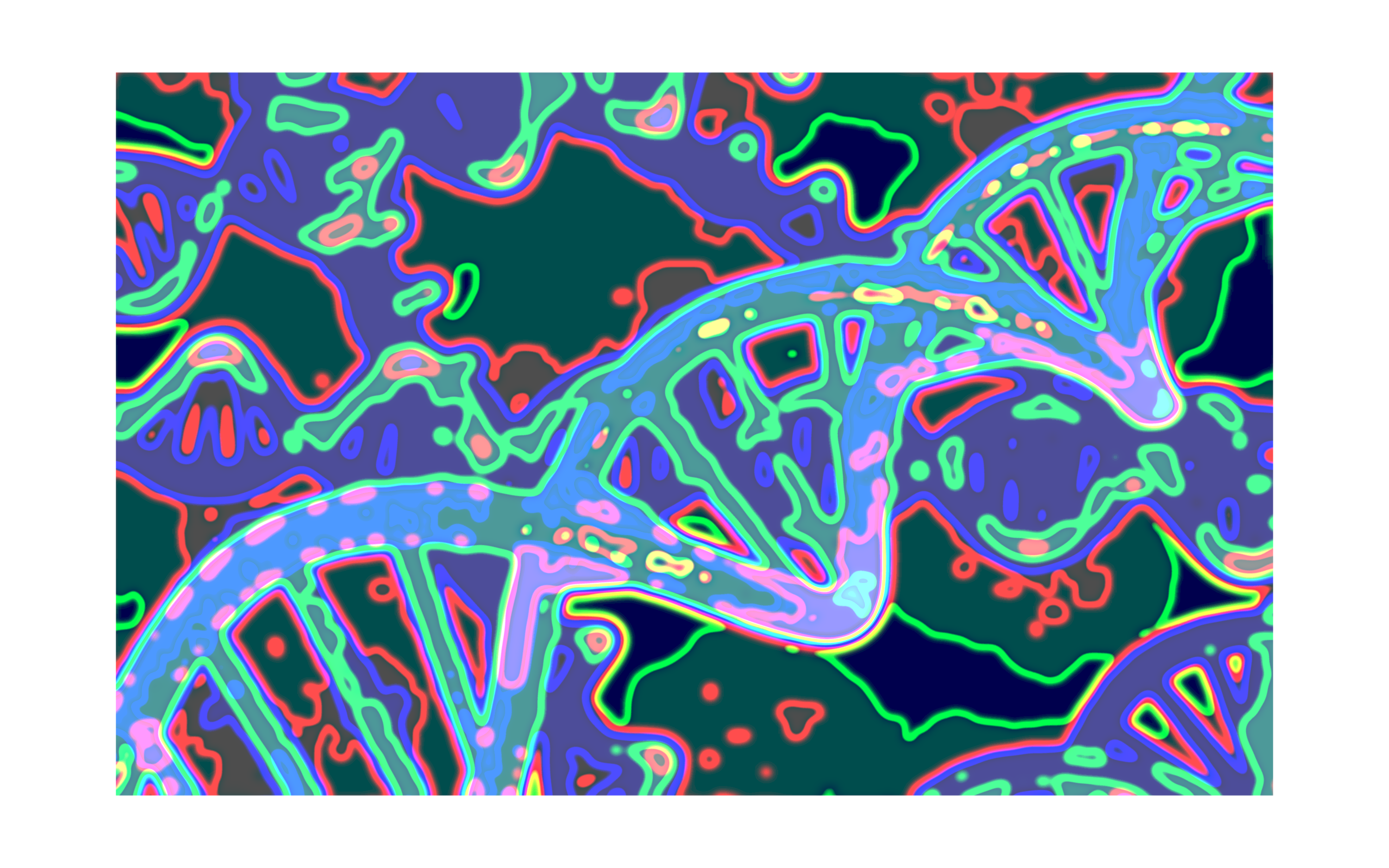Interpreting Transposon Counts & Reads
Interpreting Transposon Counts & Reads¶
Once cells have a transposon inserted somewhere in the DNA, the cells are let to grow so they can potentially generate a few new generations.
A cell with a transposon inserted in an essential part of its DNA grows very slowly or might not grow at all (due to its decreased fitness). Since the sequencing starts only at the location of a transposon insertion (see experimental methods section), it can be concluded that roughly each read from the sequencing corresponds with a transposon insertion (roughly mainly because transposon inserted in essential genes can generate no reads).
Cells with a transposon inserted in an essential genomic region, will not have divided and therefore will not have a contribution to the sequencing reads. When the reads are aligned to a reference sequence and the number of reads are mapped against the genome, empty regions indicate possible essential genes. Negative selection can thus be found by looking for empty regions in the reads mapping.
When a transposon is inserted in a non-essential genomic region, these cells can still divide and give rise to offspring and after sequencing the non-essential regions will be represented by relatively many reads.
During processing the genes can be analysed using the number of transposon insertions per gene (or region) or the number of reads per gene. Reads per gene, instead of transposons per gene, might be a good measure for positive selection since it is more sensitive (bigger difference in number of reads between essential and non-essential genes), but also tends to be nosier.
Transposons per gene is less noisy, but is also less sensitive since the number of transposons inserted in a gene does not change in subsequent generations of a particular cell. Therefore it is hard to tell the fitness of cells when a transposon is inserted a non-essential region solely based on the number of transposon insertions.
Ideally only the transposons inserted in non-essential genomic regions will have reads (since only these cells can create a colony before sequencing), creating a clear difference between the essential and non-essential genes.
However, sometimes non-essential genes also have few or no transposon insertion sites. According to Michel et.al. this can have 3 main reasons.
During alignment of the reads, the reads that represent repeated DNA sequences are discarded, since there is no unique way of fitting them in the completed sequence. (Although the DNA sequence is repeated, the number of transposon counts can differ between the repeated regions) Transposons within such repeated sequences are therefore discarded and the corresponding reads not count. If this happens at a non-essential gene, it appears that it has no transposons, but this is thus merely an alignment related error in the analysis process.
Long stretches of DNA that are without stop codons, called Open Reading Frames (ORF), typically code for proteins. Some dubious ORF might overlap with essential proteins, so although these ORF themselves are not essential, the overlapping part is and therefore they do not show any transposons.
Some genes are essential only in specific conditions. For example, genes that are involved in galactose metabolism are typically not essential, as inhibition of these genes block the cell’s ability to digest galactose, but it can still survive on other nutrition’s. In lab conditions however, the cells are typically grown in galactose rich media, and inhibiting the genes for galactose metabolism cause starvation of the cells.
A gene might not be essential, but its deletion might cripple the cell so that the growth rate decreases significantly. When the cells are grown, the more healthy cells grow much faster and, after some time, occur more frequently in the population than these crippled cells and therefore these cells might not generate many reads or no reads at all. In the processing, it might therefore look as if these genes are essential, but in fact they are not. The cells just grow very slowly.
The other way around might also occur, where essential genes are partly tolerant to transposons. This is shown by Michel et.al. to be caused that some regions (that code for specific subdomains of the proteins) of the essential genes are dispensable.
The transposons in these essential genes are clearly located at a specific region in the gene, the one that codes for a non-essential subdomain. However, this is not always possible, as in some cases deletion of non-essential subdomains of essential genes create unstable, unexpressed or toxin proteins.
The difference in essentiality between subdomains in a single protein only happens in essential genes, not in non-essential genes. Michel et.al. devised an algorithm to estimate the likelihood \(L\) of a gene having an essential subdomain:
where \(d\) is the longest interval (in terms of base pairs) between 5 neighbouring transposons in a Coding DNA Sequence (cds) (\(\geq 300\) bp), \(N_{cds}\) is the total number transposons mapping in the cds (\(\geq 20\)) transposons) and \(l_{cds}\) is the total length of the CDS. Additionally, it must hold that \(0.1 l_{cds} \leq d \leq 0.9 l_{cds}\).
It is expected that only essential genes carry essential subdomains, and indeed what was found by Michel et.al. that the genes with the highest likelihood were mostly also genes previously annotated as essential by other studies.
Because of the reasons mentioned before, not a simple binary conclusion can be made solely based on the amount of transposon insertions or the number of reads. Instead, a gene with little reads might be essential, but to be sure the results from other experiments need to be implemented as well, for example where the cells were grown in a different growth conditions. Therefore, SATAY analysis only says something about the relative fitness of cells where a specific gene is inhibited in the current growth conditions.
